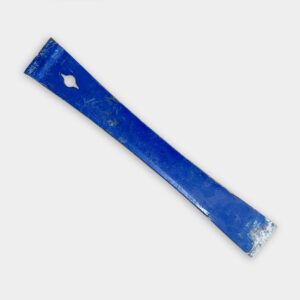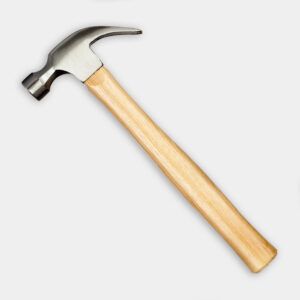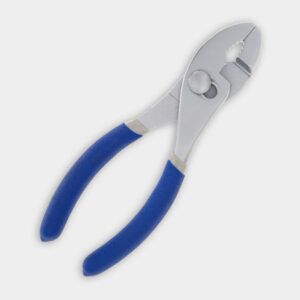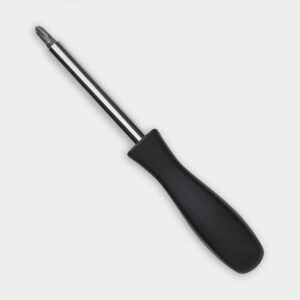We may be compensated if you purchase through links on our website. Our team is committed to delivering honest, objective, and independent reviews on home products and services.
Project details
Skill
Cost
Estimated Time
Antique windows often feature unique mechanisms that wear out over time. One such component is the sash balancer, which helps keep the window open at various heights. Opening and closing the window becomes difficult or impossible when these balancers fail. For bigger window issues, you may need to look into how to repair a sash window.
In this article, we’ll explore how to replace antique window sash balancers, restoring functionality to your historic windows. This Old House expert, Tom Silva, shows us how to replace balancers in a large, older window.
*Cost information in this article sourced from estimates used by HomeGuide.
Understanding Window Sash Balancers
Window sash balancers are essential components that counterbalance the weight of the window sash, allowing it to stay open at any desired position.
In older windows, these balancers can take the following forms:
- Retractable balancing system: This modern approach uses a spring-loaded mechanism that functions similarly to a tape measure. The strap extends and retracts, maintaining tension on the sash to hold it in place.
- Spring balance: Some windows use a spring mechanism to provide the necessary counterbalance force.
- Weight and pulley system: This traditional method uses ropes or chains connected to weights hidden within the window frame. The weights counterbalance the sash, making opening and closing the window easy.
Understanding the type of balancer in your window is crucial for proper replacement.
Signs of Failing Sash Balancers
Before diving into replacement, it’s important to recognize when your window sash balancers need attention.
Here are some common signs:
- Damage to the balancer components, such as frayed ropes or broken springs, is visible
- Opening or closing the window requires excessive force
- Operating the window causes unusual noises, such as grinding or squeaking
- The window sash feels unbalanced or tilts to one side
- The window won’t stay open or slams shut unexpectedly
If you notice any of these issues, it’s time to consider replacing your window sash balancers.
Tools and Materials Needed
Before starting the replacement process, gather the following tools and materials:
- Dust mask
- Flat pry bar
- Hammer
- Lubricant spray
- Pliers
- Random orbit sander
- Replacement sash balancers (sized to match your window)
- Safety glasses
- Screwdriver (flathead and Phillips head)
- Work gloves
Ensure you have all necessary items on hand before beginning the project to avoid interruptions.
Steps To Replace Antique Window Sash Balancers
Follow these steps to replace your antique window sash balancers:
- Remove the stop beads from the side of the window frame using a pry bar. Work carefully to avoid damaging the wood.
- Carefully lift the window sash out of the jamb. This may require some maneuvering, especially if the window hasn’t been opened in a while.
- Locate the tension hooks of the old sash balancers. Use pliers to remove these hooks from the sides of the sash.
- Remove the old sash balancers from the window frame. Depending on the type, this may involve unscrewing or prying them out.
- Clean the jamb and sash edges thoroughly. Use a random orbit sander to smooth out any rough spots that could impede smooth operation.
- Apply a lubricant spray to the jamb and sash edges. This will reduce friction and make the window easier to operate.
- Install the new sash balancers according to the manufacturer’s instructions. This typically involves screwing them into place in the same location as the old ones.
- Reattach the tension hooks to the sides of the sash. Ensure they’re securely fastened.
- Carefully place the sash back into the window frame and confirm that it’s square and level.
- Test the window’s operation. If necessary, adjust the balancers until they glide up and down smoothly.
- Reinstall the stop beads to secure the window in place. Be careful not to overtighten, as this can impede the window’s movement.
In the video, Silva demonstrates this process on a large, vintage window, showing us that the right balancers can restore a sash’s glide regardless of scale. For further sash window repair guides, read our advice on how to restore antique sash windows.
Adjusting and Fine-Tuning
After installation, you may need to make the following adjustments:
- Alignment: Ensure the sash is perfectly square in the frame. Even slight misalignment can cause binding or uneven operation.
- Lubrication: Apply a silicone-based lubricant to the tracks and other moving parts to ensure smooth operation.
- Tension calibration: Many modern sash balancers allow for tension adjustment. If your window feels too loose or tight, consult the manufacturer’s instructions for adjustment procedures.
Remember to exercise patience when fine-tuning your newly balanced window. It may take a few adjustments to get everything working perfectly.
When To Call a Professional
While replacing window sash balancers is a task many homeowners can tackle, there are situations where professional help may be necessary:
- If local building codes require professional installation for historical properties
- If the window frame is significantly damaged or rotted
- If you’re uncomfortable working with spring-loaded mechanisms
- When dealing with very large or unusually shaped windows
- When the window is in a hard-to-reach or dangerous location
Don’t hesitate to consult a window restoration specialist if you have questions about the replacement process.
Case Study: Restoring a Sleeping Porch Window
Many older homes feature sleeping porches. These porches predate modern air conditioning but served the same purpose: facilitating airflow within the home. Over time, the window mechanisms on these porches can fall into disrepair, making it challenging to open and close the windows as intended.
For instance, wooden frames with weight and pulley systems tend to decay due to prolonged use, termites, wood rot, or some combination of these factors. In many cases, restoring the wood and replacing the sash balancers can return the window to good-as-new condition and is a viable, more affordable alternative to a complete window replacement. Here’s how you can assess and address issues with your older windows:
- Initial inspection: Before doing anything else, carefully inspect your window. Look for failing components, such as frayed ropes or malfunctioning pulleys in older weight systems. Pay attention to signs of metal fatigue or rust in the pulleys and weights, and look for splintered wood in the sash.
These indicators can guide you on what specific parts might need replacement along with the sash balancers. - Challenges and solutions: Antique windows often have non-standard dimensions, and finding the right-sized sash balancers can require research. Be prepared to custom-order parts. Furthermore, years of paint build-up may create friction spots that that you’ll need to sand down and lubricate.
Once the inspection and preparation are complete, follow the instructions we provided in the “Steps To Replace Antique Window Sash Balancers” section above.
Tip: If your system uses weights, confirm that the new balancers are compatible with your sash’s weight before changing them out.
Benefits of Replacing Antique Window Sash Balancers
In addition to restoring mobility to your window, new window sash balancers offer several other benefits.
Here are a few reasons why we recommend investing in replacement balancers:
- Ease of use: Replacing worn-out sash balancers means you’ll no longer struggle to open or close your windows. Smooth operation enhances your daily living experience and makes it easier to enjoy natural ventilation.
- Enhanced safety: Older windows with failing sash balancers can pose safety risks, such as falling sashes. By replacing the balancers, you ensure that the windows operate safely and securely.
- Historical integrity: Maintaining the original windows can help preserve your home’s historic character and architectural integrity. By replacing sash balancers, you’re keeping the essence of the period aesthetics intact.
- Improved energy efficiency: Properly functioning windows provide better insulation and can help maintain a more consistent indoor temperature. This can lead to potential savings on energy costs over time.
- Increased property value: The condition of your windows affects your home’s market value. Well-preserved historical elements, such as antique and original windows, can attract prospective buyers. Additionally, buyers are more hesitant to put an offer in on a home if they know its windows are sub-standard, as window repairs and replacements are expensive, inconvenient, and time-consuming.
Taking the time to replace antique window sash balancers is an investment in your home’s functionality, aesthetic appeal, and value.





